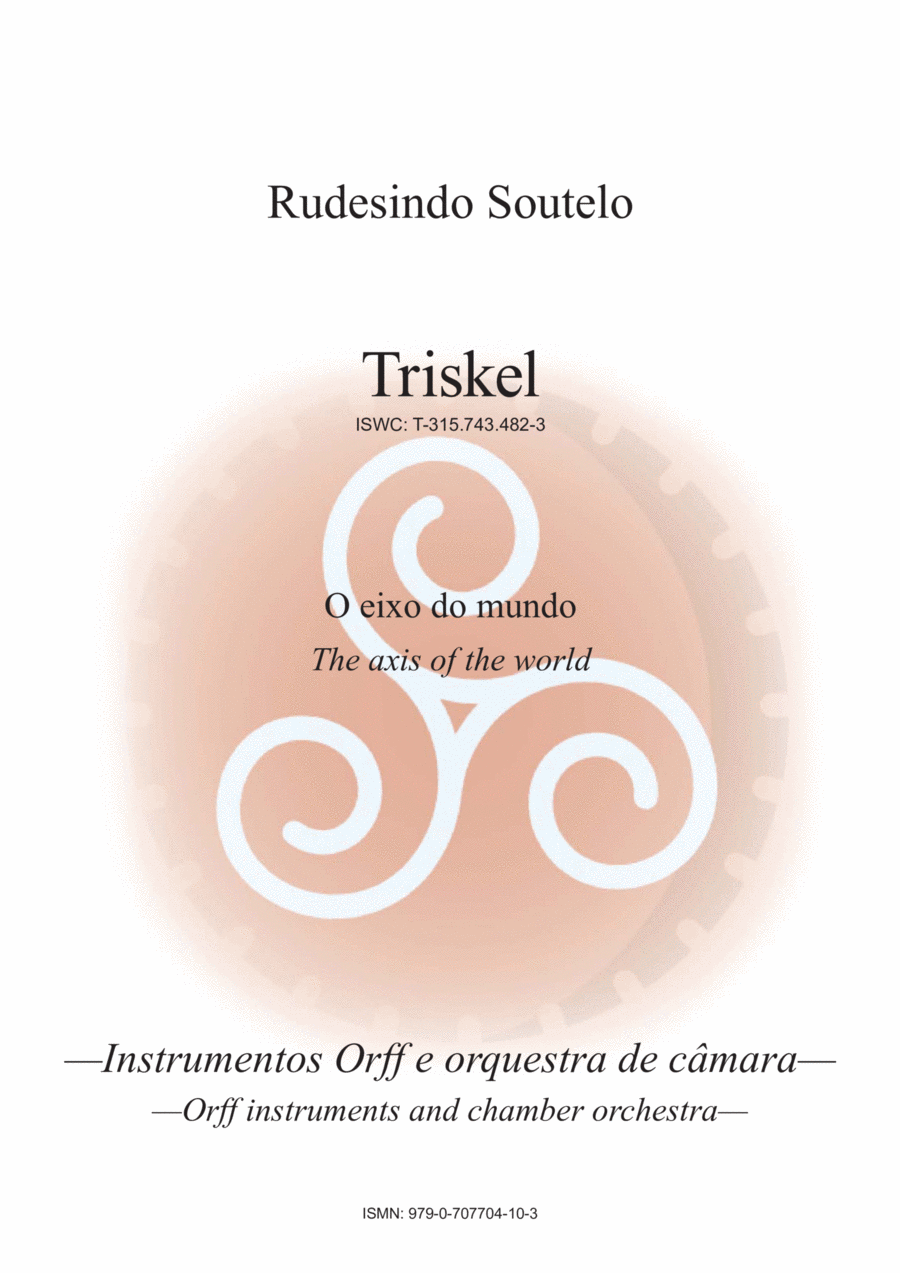Chamber Orchestra - Level 3 - Digital Download SKU: A0.1230983 Composed by Rudesindo Soutelo. Arranged by Orff Instruments & Chamber Orchestra (C Score). 21st Century,Celtic,Chamber,Children,Classical,Irish. 47 pages. Publisher by Rudesindo Soutelo #826603. Published by Publisher by Rudesindo Soutelo (A0.1230983). Ao Grupo Instrumental da EB de V.P. de Âncora e à Orquestra ARTEAMRudesindo Soutelo:Triskel (2023) for Orff Instruments and Chamber Orchestra [ca. 7'42]O eixo do mundo / The axis of the worldPremière: 16-V-2023. Teatro dos Bombeiros de Vila Praia de Âncora (Portugal). Int.: Grupo Instrumental Orff da EB de V.P. de Âncora (Prof. Manuela Moura) e Orquestra ARTEAM de Viana do Castelo. Dir.: Diogo Costa.ISWC: T-315.743.482-3ISMN: 979-0-707704-10-3Páginas de amostra / Sample pages: https://www.researchgate.net/publication/370676001=oOo=The Triskel is present in many ancient cultures but it is in the Celtic culture where it has acquired a greater prominence. It represents the power of the Sun, the axis of the world, the original matrix. It is an allegory of the number 3; of the past, present and future; of the Christian Trinity. It evokes the differences in the unity of the great whole, the Universe.The work was originally composed to integrate an Instrumental Group Orff (Glockenspiel Soprano and Alto, Metallophones and Xylophones Soprano, Alto and Bass), from the General Elementary School, as soloists in a Chamber Orchestra. The organising complex of the work is [4 (2, 2), 3 (2, 1)].There is, also, an edition for Marimba and Chamber Orchestra.=oOo=O Triskel está presente em muitas culturas antigas, mas é na cultura celta onde adquiriu um maior relevo. Representa o poder do Sol, o eixo do mundo, a matriz original. É uma alegoria do número 3; do passado, presente e futuro; da Trindade cristã. Evoca as diferenças na unidade do grande todo, o Universo.A obra foi composta originalmente para integrar um Grupo Instrumental Orff (Glockenspiel Soprano e Alto, Metalofones e Xilofones Soprano, Alto e Baixo), do Ensino Básico geral, como solistas de uma Orquestra de Câmara. O complexo organizador da obra é [4 (2, 2), 3 (2, 1)].Existe, ainda, uma edição para Marimba e Orquestra de Câmara.
